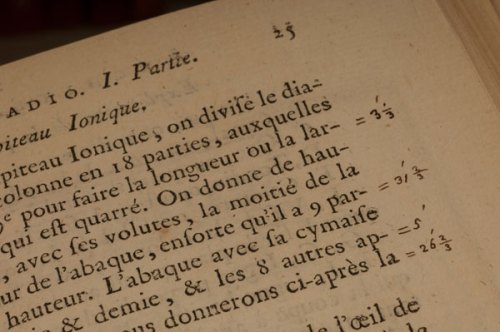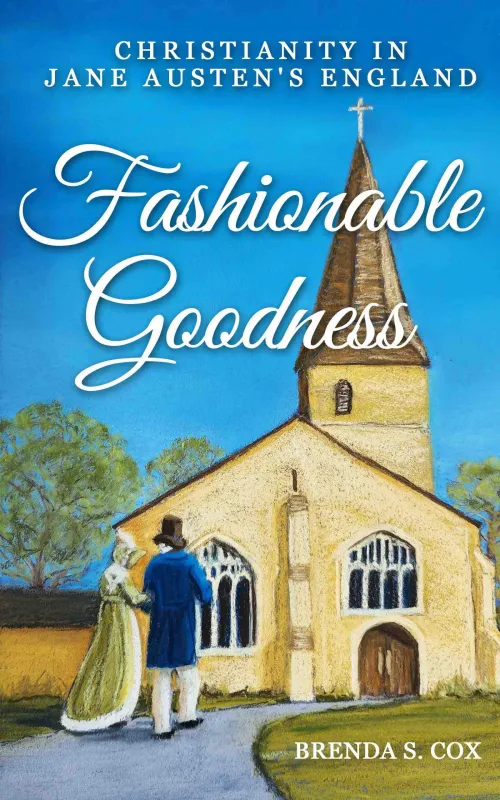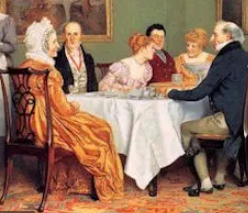
Jefferson's neat notations in the margin of "Architecture de Palladio. Image @Washington University Libraries, Department of Special Collections
Most of us have written in the margins of books, especially in our own textbooks when cramming for an exam or writing a paper, but how many of us write notes in expensive hardcovers that we treasure? These days writing inside books is heavily discouraged and frowned upon, but it was once a common practice, one that has pleased many a historian and bibliophile. Imagine coming across a dusty old book at a yard sale and finding the notes and scribblings of a famous person inside of it. Imagine the joy you would feel to come across such a connection!
Marginalia, or the practice of writing in books, has a rich literary tradition. Samuel Taylor Coleridge’s friends lent their books to him on purpose hoping that he would write along their margins. Chances were that he did, for he was a prolific margin writer. Mark Twain often made comments, giving his opinions or hotly debating with the book’s author. Other practitioners of margin writing were William Blake, Charles Darwin, and Thomas Jefferson. Even Jane Austen joined this select group, scribbling in her copy of Oliver Goldsmith’s book about her favorite poet, William Cowper (pronounced Cooper.)
In Persuasions Online, Jane Austen scholar Edith Lank writes about her copy of the two-volume Lord Barbourne edition of Jane Austen’s letters, which she found at a sale. This books is filled with
detailed genealogies, marginal comments, explanations and family gossip…The first were Fanny Caroline Lefroy and her sister Mrs. Louisa Lefroy Bellas, both daughters of Jane Austen’s neice (sic) Anna Austen Lefroy. The sisters annotated the book in careful nineteenth-century script and printing.” – List of Annotations in the Bellas Copy of Lord Brabourne’s Letters of Jane Austen
Thomas Jefferson’s scribblings were as elegant and refined as his mind. He sold his book collection to the Library of Congress in 1815, and kept a personal collection of books that he built upon until his death. Those books revealed that he often corrected typographical errors.
Marginal scribblings provided a window into the minds of its writers, for they offered an insight into what they thought and revealed personal aspects of their characters. My scribblings in college texts were boring, for they merely summarized the most important points I needed to recall. I rarely left a personal thought in the margins or wrote inside my own books, although I dog eared favorite passages or left scraps of paper between pages that I wanted to reread.
The author of an article in the New York Times feared that the advent of eBooks would end the art of marginalia, but the following passage partially assuages that fear. I say partially because part of the charm of marginalia is to see the author’s hand and his/her choice of writing implement, which is something Kindle does not yet offer (who knows what the future will hold?):
When I received a Kindle as a gift earlier this year, my habits of marginalia soared to new heights. It became extremely easy to highlight passages and add notes, which are then situated in the text I’m reading but also pulled together into my Kindle account on Amazon where I can, for instance, share them with students in a course, fellow members of a book discussion group, family, and friends…even, in theory, with enemies. I’ll rebut and rebuke them with my rapier marginalia. It’s even possible to add a marginal note on a Kindle and then tweet it.-The margins of Marginalia; Books From Thomas Jefferson’s Personal Library Rediscovered
Do you write inside books? What’s your opinion about about this literary tradition? And do you think Kindle will rekindle it?
More on the Topic
- Thomas Jefferson
- JASNA marginalia: List of Annotations in the Bellas copy of Lord Brabourne’s Letters of Jane Austen
- Isaac Newton’s marginalia
- Book Lovers Fear Dim Future for Notes in the Margin: New York Times
- Trove of Thomas Jefferson Books Discovered
- Poem about Marginalia
- Marginalia: Edgar Allen Poe













I buy a lot of second hand books and I feel the art of marginalia ended a long time ago.
I have read a lot of Blake’s marginalia, and his thoughts and inspirations on what he is reading is frequently more interesting than the thing he is reading itself, but the marginalia I most commonly find in books now are by students studying. This marginalia largely consists of summarising or repeating the plain and obvious point the text is making – not providing anything extra to the text.
Worst still is when you read the marginalia and feel that the reader has so blatantly misunderstood what they were reading. So very frustrating.
I wrote all over my college texts in colored pens. It helped me remember important points. Nothing worth saving…but I did pass my tests.
Today, in my fiction reading I rarely make any kind of notations, although I would really love to correct the mistakes that I find. Sigh!
Would they have written in pencil? That would seem to be easier than to dip a quill in ink. So, I’m guessing that they’d read at a table or desk mostly.
Fascinating that the Kindle will permit margin writing…so in the future will we be buying used Kindles at auction in hopes of discovering an author’s thoughts?
What a fascinating article. I had never thought of my marginal (literally) ramblings as following in the tradition of Thomas Jefferson and Jane Austen. And I had no idea that you could actually make notes in a kindle edition. See, I’m not too old yet to learn. That in itself is a cheerful thought. In practice, I am more likely to write in my Bible. I’ve filled up three already. I have my mother’s Bible and treasure the notes that she had made in the margins.
Thanks for a thought-provoking article and for introducing a new word to my vocabulary — marginalia. I suppose that using WORD’s review function is the 21st century marginalia. I use that all that time, especially when I beta JAFF.
Gayle
Hmm . . . marginalia seems an art form for the day when people collected books, not just bought, read, and got rid of them. I love finding notes in the margins of old books, it’s like finding a wormhole to a different time. Such a gift!
I once got a copy of “The Village in the Jungle”, a novel by Leonard Woolf (husband of, etc.) from the London Library, and was reading along when I turned the page and the text didn’t make sense. I flipped back and forth but there was just a gap in the text. And someone had lightly pencilled in the margin: “A line is missing here. In a better book, that would be a pity.”
Ouch!
Nice post!
I, too, write in my Bible the things that I’ve learned either by my own study or notes from a sermon or Bible study. I don’t tend to write in my Jane Austen books because I’m still a bit in awe of them. However, I have read 2 of the annotated versions of her novels where there are footnotes galore and I have so appreciated them. I’m reading her letters now for the first time. I had already decided that the next time I read through them I will mark familiar passages and perhaps make list of the important events in her life included in them. I do write notes and date them in my devotional books that I use so in future when I reread them I can see how far I’ve come in whatever I was thinking that long ago day.
I spent four years working as the school librarian for one of our local schools, about 20 years ago, and find it very difficult to even highlight text in a book. Such a strict tradition of not marking in books has been passed down through generations of librarians that I probably can’t undo this conditioning. Thanks for such an informative post!
I wonder where they stood on ‘dog-ears’ ?
Grace x
It’s odd because I love old books, and enjoy reading someone else’s margin notes. However, I cannot make such notes myself, especially in hardbacks. Even highlighting in paperback study material is hard for me; I usually make my notes in a journal. Excellent article!
Nice post Vic! I use to write in my books too! :)
I’ve stopped, Adriana, but I do dog ear favorite pages. Which is more worthwhile? Writing in the margins, or marring a page by downturning a corner without annotation. I am thinking about writing in the margins again.
Oh.. don’t do dog ear in my favorite books, but… I use post it… it’s a mess! :)
I see you’re using kingle… so… it’s difficult to return to our old addictions, isn’t it? I feel sorry about my books, but it’s something I use to do since I was teenager… :)
I use to write commnets such as: well done (to a specific character) hahaha
Very interesting and it’s true that I’ve found enjoyment from random things written in old books. Nevertheless, it was ingrained in me from a very early age that to mistreat books in any way was like committing sacrilege. To this day I cringe when I see a cover or page highlighted, dog-eared, wrinkled, or the spine broken from folding it back on itself, and although I succumbed to the habit in school, I can no longer make myself write in a book. Even my name in the cover takes a lot of debating. I guess that’s one more benefit of the digital age. Writing notes damages nothing.
oh, i love your blog, it’s so interesting! :) i like to find margin notes in old books but somehow i just couldn’t write them myself.. x
First of all, I LOVE your blog!!!
And as far as marginalia (never knew there was a word for it before) goes, I never read a book without a pencil (which often serves as a bookmark as well). I love making notes and writing down my thoughts as I read, and the margin (or the blank pages in the front and back of the book for more lengthy thoughts) are perfect. That way it’s always right there next to the text that inspired it.
Thank you, Laura and welltrainedmom, for your compliments. I am glad that you stopped by and left your insights!
Great post, really interesting. Love the comment from mefoley!
Funny how so many commenters (would) love reading marginalia, but would not write any themselves…
I too was raised in the sacredness of books, but more for the knowledge they contained than for the object itself. My parents were scholars, and used notes frugally. This habit shall continue with me :)
I write marginalia to comment on a passage I loved, or to debate with the author’s stance! Also, on books that I am certain to reuse, I append the date on said notes, followed by a new dated comment at the time of rereading. This allows me to see if my opinion has changed. If indeed so, how.
Lovely post, thank you.
Sorry, instead of frugally, I meant liberally.
Hector, thank you for stopping by!
Thank you for this post. I am teaching how to annotate classics for literary analysis. Seeing what famous people did will bring the lesson to life!
Laurie
I’m reading a whodunit from the library witten in 1929, a classic murder-in-a-country-house mystery, and in the margin next to the description of how the bedrooms open off one hallway, someone has helpfully made a little sketch plan of the house! Unexpected and fun!
[…] of books of notable people of the past who annotated their books! Once my kids found out that Thomas Jefferson, Sir Isaac Newton and Mark Twain wrote in their books, my kids felt they had permis… After a few tips from the author, we looked at her example of annotation with “The Gift of […]